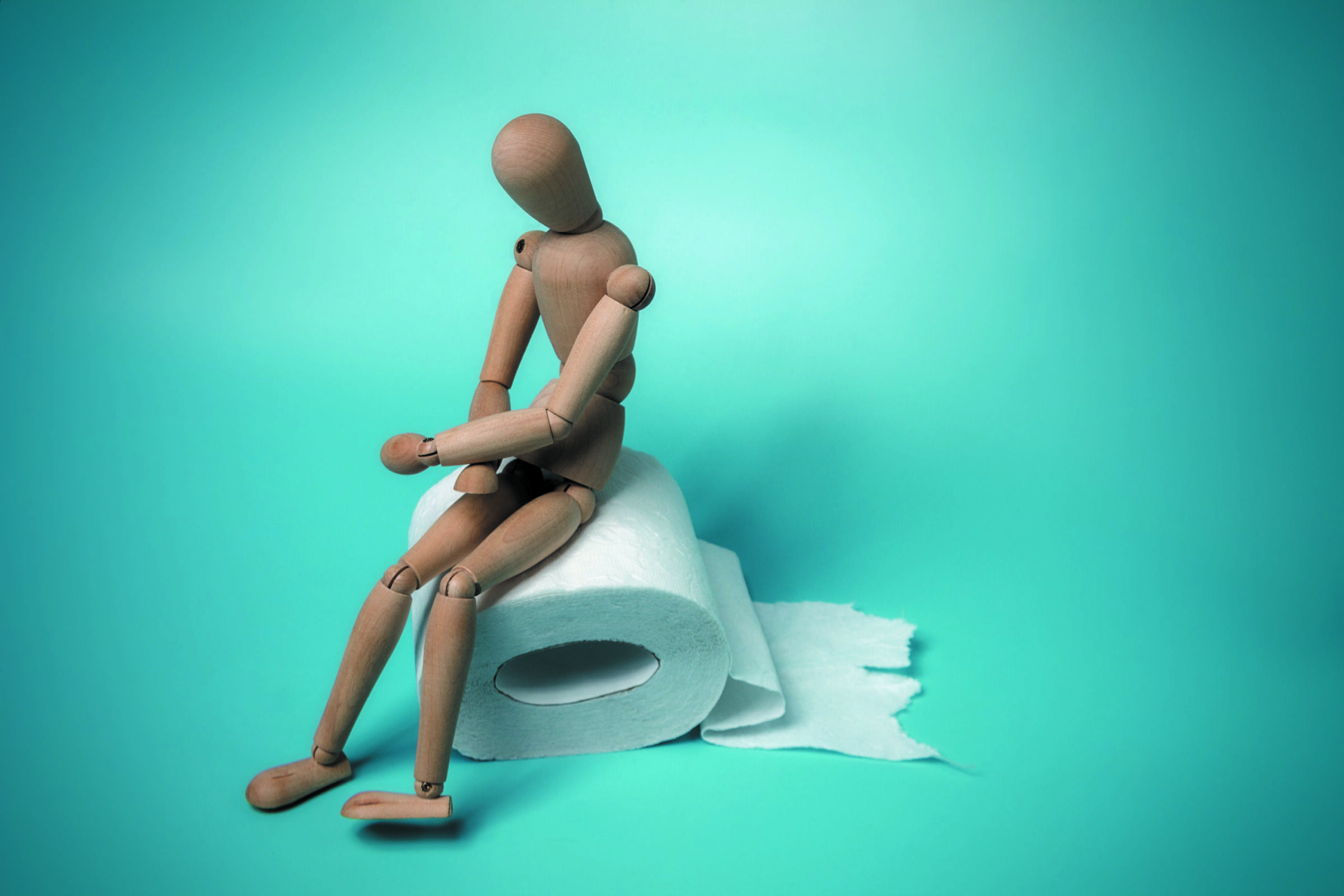It’s the most common medical problem that no one likes to talk about. But, with millions of people experiencing discomfort from hemorrhoids every year, it’s also a problem that doctors are very familiar with. Fortunately, there are straightforward ways of getting relief.
Though people often use the term hemorrhoids to describe a medical condition, hemorrhoids are actually just another part of the human anatomy: Everyone has these veins inside the anal canal that help support the sphincter muscles and maintain continence. When they become enlarged, and the tissues that support them weaken, people develop the condition of the same name.
What’s going on
There are two types of hemorrhoids: internal and external.
Internal hemorrhoids originate in the anal canal. You may find out you have them only from a colonoscopy report. If you strain on the toilet, one may create a small amount of bleeding that you’ll see on the toilet paper or in the water. (Keep in mind that a single drop of blood can turn the whole toilet bowl red, so it’s important not to panic.)
If a hemorrhoid gets larger and starts to bleed more, however, you should not ignore it. An internal hemorrhoid can grow and develop a stalk that gets longer until it actually protrudes from the anus. This prolapsed hemorrhoid can cause discomfort or pain, irritation, and possibly itching as well.
Exterior hemorrhoids form outside the rectum. (You can see them with a mirror.)These veins can be irritated and/or painful if the area is inflamed and swollen. Typically, there isn’t much bleeding, but an external hemorrhoid can swell suddenly to the size of a walnut in a condition called thrombosis. That can lead to increased pain, inflammation, and swelling, and needs to be evaluated by your doctor.
Besides being a natural consequence of aging, hemorrhoids can develop from everyday habits that increase pressure in the anal canal. Constipation because of a low-fiber diet, heavy lifting, straining to pass stool or simply sitting for long periods on the toilet, not getting enough exercise, and being overweight all contribute to their formation.
When to seek treatment
Hemorrhoids are treated only when symptoms like bleeding or pain become bothersome, not just because a hemorrhoid is enlarged. If you have bleeding during bowel movements or discomfort that doesn’t improve after a week of home care, talk to your doctor. Don’t let any feeling of embarrassment stand in your way—hemorrhoids are a condition that colorectal specialists see every day.
For 90 percent of patients, hemorrhoid treatment is focused on adding fiber to the diet and other lifestyle remedies to prevent progression, encourage regular bowel movements, and avoid straining.
Some people swear by topical treatments, like phenylephrine (Preparation H) or witch hazel. While these may provide temporary relief, they are usually not a good long-term solution. To address the underlying problem, follow some simple guidelines:
Increase fiber. Getting more fiber in your diet with fruits, vegetables, and whole grains helps soften stool, increase its bulk, and reduce constipation, which in turn prevents the straining that leads to hemorrhoids.
As a bonus, fiber also has other tremendous health benefits, including weight loss and reduced risk of diabetes, stroke, heart attack, and high blood pressure. The recommended daily fiber intake is between 25 grams for women and 38 grams for men. Consuming enough from your diet can be difficult and usually requires taking over-the-counter fiber supplements.
Drink plenty of fluids. Aim for the often-suggested eight glasses of water to help keep stool soft and help fiber supplements do their job.
Rethink bathroom habits. Stop scrolling on your phone and doing other types of reading on the toilet. This extra sitting time leads to extra straining and more intra-anal pressure. It’s also important to go to the bathroom as soon as you feel the need to go. If you delay, stool can actually harden and become difficult to pass.
Lose weight if needed. Extra pounds put a strain on anal veins. In addition to changes in diet, try to move more. Sitting all day isn’t good for health or hemorrhoids, and regular exercise also helps you stay regular.
DIY. If you have a protruding internal hemorrhoid, you can push it back into the anus yourself. This isn’t dangerous to do and may help alleviate some swelling.
Next steps
When lifestyle changes aren’t enough to alleviate hemorrhoids, the next step is in-office procedures, such as rubber-band ligation, which involves tying the hemorrhoid off, and sclerotherapy, which involves injecting a liquid agent into the vein. Both usually involve several office visits. The procedures carry a small risk of a local infection, usually in the first few days, and your doctor will alert you to red flags to watch for, such as severe pain, fever, and the inability to urinate.
Sometimes surgery is needed. A hemorrhoidectomy can reach the very base of the hemorrhoid and remove it along with any affected surrounding tissue. Improvements in surgical techniques have gone a long way toward reducing the pain associated with the procedure, but there is a lengthy recovery: It may take up to four weeks for all pain and bleeding to resolve.
The first few days can be especially difficult, though anesthetics injected in the area during surgery should help in the immediate aftermath. Nonsteroidal anti-inflammatory drugs are the first-line medication for managing pain. Doctors try to avoid prescribing opioids, not only because of the risk of addiction, but because constipation is a major side effect—and that’s the last thing you want when recovering from anal surgery. Soaking in a tub and applying warm compresses help some people, while others find relief with a cold pack.


